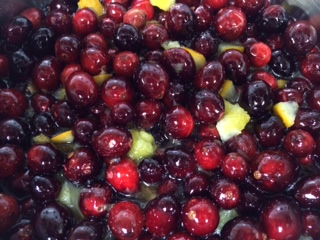
by Ginny Hinton | Nov 15, 2018

Cranberries cooking
It may seem like the year has barely started, but the holiday season is here! A little bit of planning now can go a long way toward avoiding that, “I blew my diet and need bigger jeans” feeling. Believe it or not, there are holiday treats that are nutritionally guilt-free, as long as you don’t go overboard. As with so many other things, moderation is the key! Below are some classic holiday favorite foods with hidden health benefits:
Sweet Potatoes: It’s no secret that sweet potatoes are good for you – but they may have even more benefits than you think! Sweet potatoes contain a lot of Vitamin A. That’s a great source of alpha and beta carotene that helps keep your eyes, bones and immune system in top shape. Sweet potatoes are also one of the top food sources of potassium, with almost twice as much of the mineral as you find in a banana. When choosing sweet potatoes, look for ones that are firm with tapered ends and a uniform shape and color. Miniature sweet potatoes are fun and pack the same great health benefits.
Cranberries: Bright red cranberries are a little too tart to eat alone but they add a beautiful festive touch to any holiday table. With only 45 calories per cup plus a healthy dose of Vitamin C and fiber, they’re a winner all the way around. Cranberries also have more disease-fighting antioxidants than almost every other fruit and vegetable. Buy cranberries fresh in the fall and winter and use them soon, as they don’t last long. Store them in a tightly sealed bag in your refrigerator to keep them fresh longer.
Nuts: Yes, they’re high in calories – and fat – but nuts are also loaded with vitamins and minerals. Eating a handful of nuts a few times a week may lower your risk of heart disease. Nuts are full of antioxidants, energy and protein. Think of nuts, in moderation, as a Christmas gift for your body!
Cocoa: What better way to begin – or end – the day than a steaming hot cup of chocolate? Knowing the health benefits of cocoa give us even more reason to love it. Remember those healthful antioxidants? Dark chocolate is loaded with them. In fact, if you choose dark chocolate with a high percent of cocoa solids, you may help lower your blood pressure, improve your blood vessel health and control your cholesterol. So, give in to those chocolate cravings – in moderation, of course!
There are lots of ways to make healthier holiday dishes. Check with your local UF/IFAS Extension Office for delicious recipe ideas that won’t break your budget or your waistline.

by Angela Hinkle | Aug 23, 2018

Healthy Pantry
Photo Source: Angela Hinkle
We eat to survive, right? Yes, but when you really think about it, we eat to thrive. Food is more than calories for energy. Food brings family and friends together. It provides comfort. It makes our bodies healthy and can protect us from diseases. The next time you give to a food pantry, think about what you can give to help those in need thrive, not just survive. So, how do you donate food to thrive?
A Balanced Diet
It’s important to eat from every food group every day. It’s important to give those in need the chance to eat every food group every day. This way, they get a variety of nutrients needed for healthy bodies. Choose healthier choices from each food group. See https://www.choosemyplate.gov/ for more information.
Fruits & Veggies: Half MyPlate
- Fruits and vegetables provide so many good vitamins, minerals, fiber, and water.
- All forms count – canned, frozen, fresh, dried, and juice.
- Canned fruit in 100% juice (Lite or heavy syrup equals a little or a lot of added sugar.)
- Juices that are 100% fruit or vegetables.
- Low- or no-sodium canned vegetables (Higher sodium intake tends to go hand-in-hand with higher blood pressure.)
- Try to stay away from high-fat, high-sodium, and high-sugar syrups and sauces.
- Packaged dried fruits and veggies are both popular now.
- The more fruits and vegetables, the better!
Whole Grains
- The whole edible part of the grain plant gives us fiber and loads of nutrients to keep us healthy. They even have special parts that help fight diseases.
- Look for the word whole at the beginning of the ingredient list.
- Help pantries stock whole grain crackers, hot and cold cereals, and tortillas. Donate whole grain pasta and brown rice.
Lean Proteins
- Protein helps build and repair tissue.
- Protein provides the building blocks of muscles, bones, skin, and blood.
- Go for lower-sodium and lower-fat choices. (Most of us over the age of two don’t need that extra fat.)
- Donate tuna, chicken, or salmon in water.
- Peanut butter is always popular.
- Try offering a variety of packaged seeds and nuts.
Dairy
- The calcium in dairy foods makes strong bones and teeth.
- Try low-fat versions of shelf-stable milk.
- Non-fat dry milk is great for sauces and casseroles as well as drinking. (If used for drinking, it tastes best to add the coldest water possible.)
- Low-fat yogurt and cheeses are a nice complement for pantries with refrigeration.
- For those who can’t have dairy, offer calcium-fortified soy or almond milk, cereal, or orange juice.
So don’t just think “feed them” when you donate, think “feed them well.” Donate beyond survive. Donate to thrive.
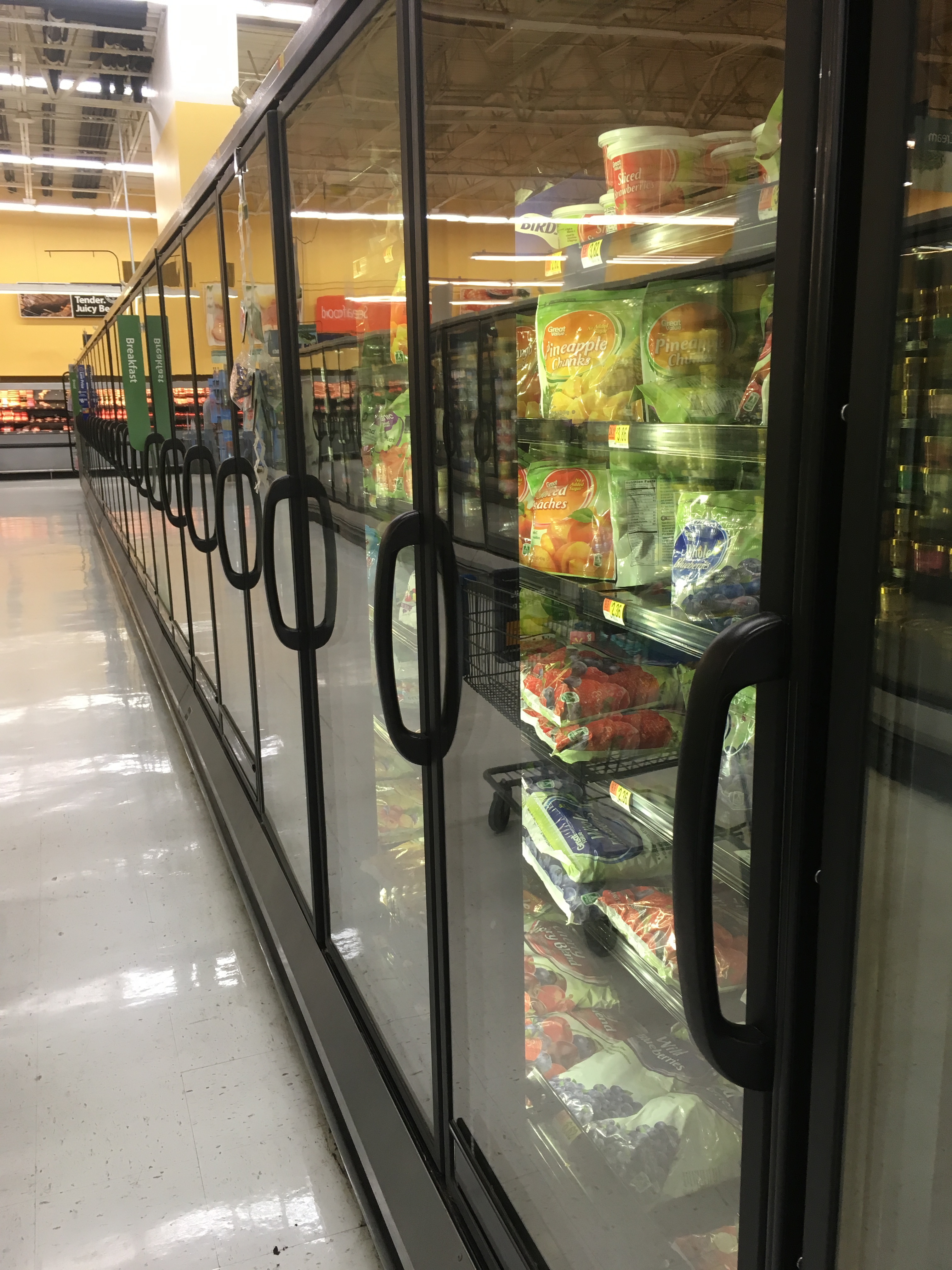
by Melanie Taylor | Feb 26, 2018
 Based on information provided by the American Frozen Food Institute, on average, 40% of all food in the United States goes uneaten and wasted, which is an annual loss of $165 million. Fresh fruit and vegetable waste makes up nearly one-third of this number. With these discouraging numbers and financial losses, how can the frozen food industry help to solve this problem? Frozen food and beverage companies work hard to create the safest and best freezing techniques to keep food safe by preventing microorganisms from growing and by slowing down the enzyme activity that causes food to spoil. Modern freezing techniques have been designed to preserve food at its peak freshness and nutrient content. Frozen food makers continue to work with the U.S. Department of Agriculture (USDA) and the U.S. Food and Drug Administration (FDA) to keep America’s food supply the safest in the world.
Based on information provided by the American Frozen Food Institute, on average, 40% of all food in the United States goes uneaten and wasted, which is an annual loss of $165 million. Fresh fruit and vegetable waste makes up nearly one-third of this number. With these discouraging numbers and financial losses, how can the frozen food industry help to solve this problem? Frozen food and beverage companies work hard to create the safest and best freezing techniques to keep food safe by preventing microorganisms from growing and by slowing down the enzyme activity that causes food to spoil. Modern freezing techniques have been designed to preserve food at its peak freshness and nutrient content. Frozen food makers continue to work with the U.S. Department of Agriculture (USDA) and the U.S. Food and Drug Administration (FDA) to keep America’s food supply the safest in the world.
Freezing means less wasted food and easier access to well-balanced, portion-controlled nutritious foods during every season and in every community. Many times, frozen foods cost less per serving, but most importantly, they have a longer shelf life than fresh or refrigerated foods.
How do frozen foods play such an integral part in the well-balanced, nutritious diets of Americans? The frozen food aisle offers a large variety of vegetables, fruits, and other prepared foods at reasonable prices year ’round. Freezing reduces the need for additives and preservatives. Frozen foods also provide nutritious options that fit into all of the food groups suggested by Choose MyPlate.gov (fruits, vegetables, whole grains, protein, and dairy). They also are a sensible choice when trying to control calories and fat, sugar, saturated fat, and sodium intake. In addition, unused products can be placed back in the freezer for later use.
If you have concerns about frozen foods, it’s time to rethink them. Let’s BUST those crazy frozen food myths swirling around out there!!!
FROZEN FOOD MYTHS VS. FACTS
MYTH: FROZEN FRUITS AND VEGGIES AREN’T AS NUTRITIOUS AS FRESH
FACT: Recent studies found there is no difference in nutrition between frozen and fresh produce.
MYTH: FROZEN FOODS ARE READY TO EAT
FACT: Frozen foods are ready to cook, not ready to eat. As their name suggests, ready-to-cook foods must be cooked or baked according to package instructions.
MYTH: FROZEN MEALS DON’T USE REAL INGREDIENTS
FACT: The freezer aisles of your supermarket are filled with meals made with the highest quality ingredients and prepared the way you would prepare them (if you had the time).
MYTH: FROZEN MEALS AREN’T ENVIRONMENTALLY FRIENDLY
FACT: Actually, frozen foods minimize the amount of spoiled food we throw away because they are already portioned out, so we can take what we need and save the rest.
MYTH: FROZEN MEALS ARE MORE EXPENSIVE THAN RESTAURANT TAKE-OUT MEALS
FACT: Restaurant-inspired entrees like seafood scampi, sesame chicken, and Monterey chicken cost under $4 each. You do the math.
MYTH: FROZEN MEALS ARE NOT A GOOD CHOICE FOR HEALTH-CONSCIOUS CONSUMERS
FACT: “Better-for-you” options are available in the frozen food aisle to make it easier for consumers to control intake of calories, fat, saturated fat, and sodium.
For more information on the frozen food and beverage industry, please visit www.affi.org.
For more information on incorporating frozen foods into your healthy lifestyle, please visit: http://edis.ifas.ufl.edu/fs186.
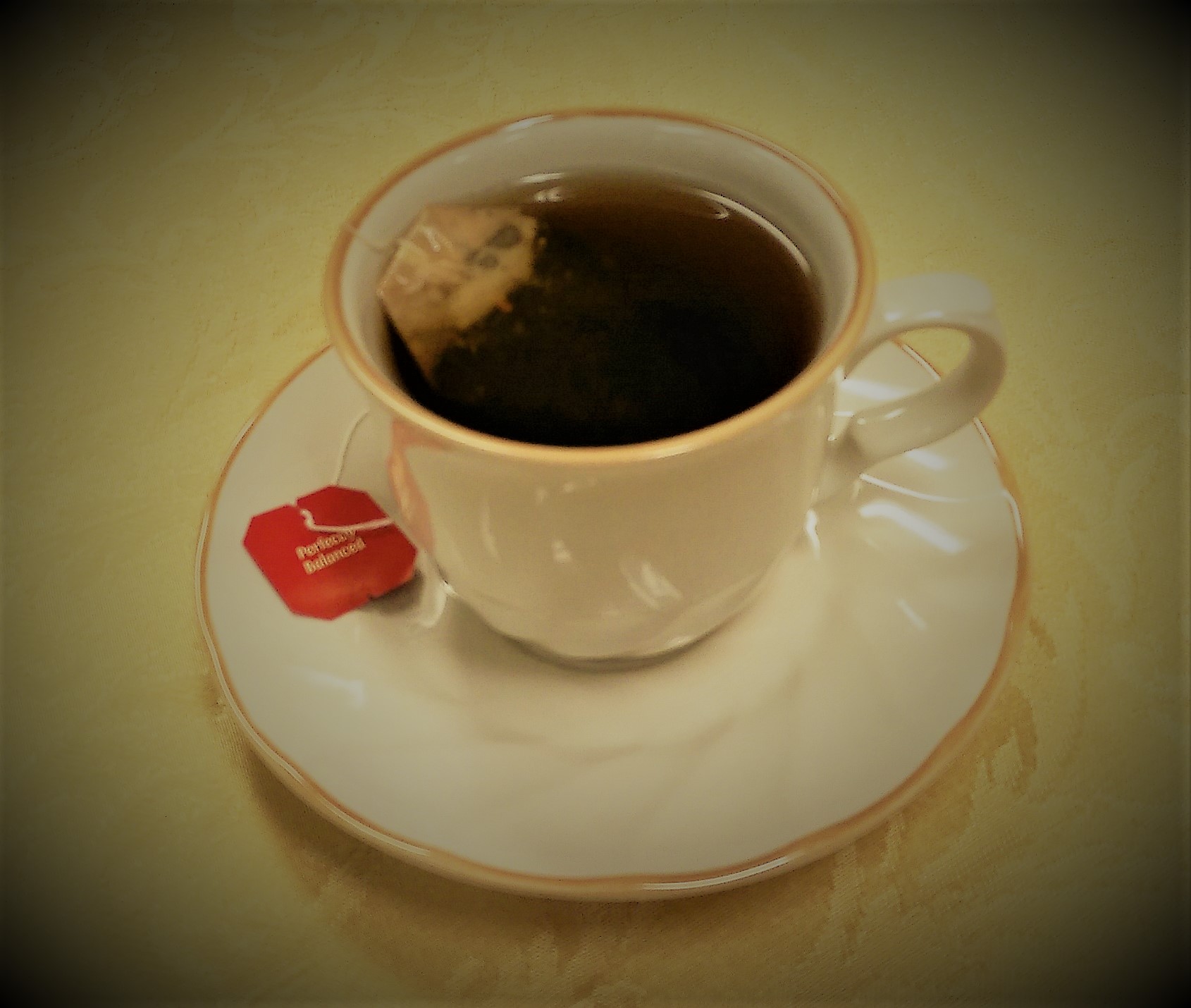
by Ginny Hinton | Feb 20, 2018
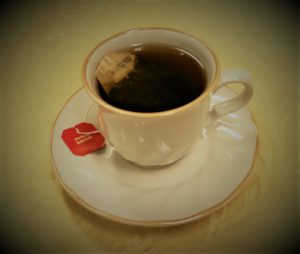 When there’s a chill in the air, nothing sounds better than a hot cup of coffee or tea. But what are the health benefits and risks of these popular beverages? The answer may be much easier to swallow than you think.
When there’s a chill in the air, nothing sounds better than a hot cup of coffee or tea. But what are the health benefits and risks of these popular beverages? The answer may be much easier to swallow than you think.
Coffee
Americans consume over 400 billion cups of coffee every year. The drink has been blamed for everything from increased heart rate to insomnia – and those may be valid complaints, especially for heavy coffee drinkers. Recent studies give a brighter picture for those who drink a moderate amount. Black coffee has no calories or fat. The caffeine in coffee enhances mood and performance by blocking neurotransmitters that slow brain activity and by affecting other neurotransmitters (i.e. serotonin) that affect mood. In fact, 14 studies with healthy, rested subjects showed improved alertness, short-term recall and reaction time. In addition, coffee contains healthful antioxidants which may lower the risk of stroke and of heart disease in females. Moderate daily intake also helps keep the body hydrated. So, how much is too much? Because caffeine amounts vary among coffees, a maximum of 1/3 to 4 cups per day is recommended, depending on your java of choice.
Tea
On any given day, over 158 million Americans drink tea. There are three main varieties: black, green and oolong, and benefits depend on the type of tea. All tea is full of antioxidants, and the strongest evidence for health benefits is on the side of heart health. Black tea may protect against Type 2 Diabetes and there is some evidence for lowered heart attack and stroke risk. Green tea is a traditional Chinese remedy for headache and depression. It may also help with heart health by lowering cholesterol. Unfortunately, there is no direct evidence for tea being helpful with weight loss. Since typical caffeine levels for tea are less than half that of coffee (20-90 mg compared to 50-120 mg), the recommended maximum range of intake is 1 to 8 cups per day.
That’s the scoop! Enjoy your coffee and tea in moderation, limit added cream or sugar, and you’ll be treating your body well.
References:
Soong, J. (2011). What Counts as Water? Stay Hydrated and Healthy. http://www.webmd.com/parenting/features/healthy-beverages
Caruso, L., Shelnutt, K., Kauwell, G. (August 2014). Hydration Myths. http://edis.ifas.ufl.edu/fy1409.
Ruxton, C. (February 2008). The impact of caffeine on mood, cognitive function, performance and hydration: a review of benefits and risks. Nutrition Bulletin. 33(1): 15-25 http://onlinelibrary.wiley.com/doi/10.1111/j.1467-3010.2007.00665.x/full
Cochran, N. (January 2017). The Health Benefits of Tea. http://www.eatright.org/resource/health/wellness/preventing-illness/the-health-benefits-of-tea
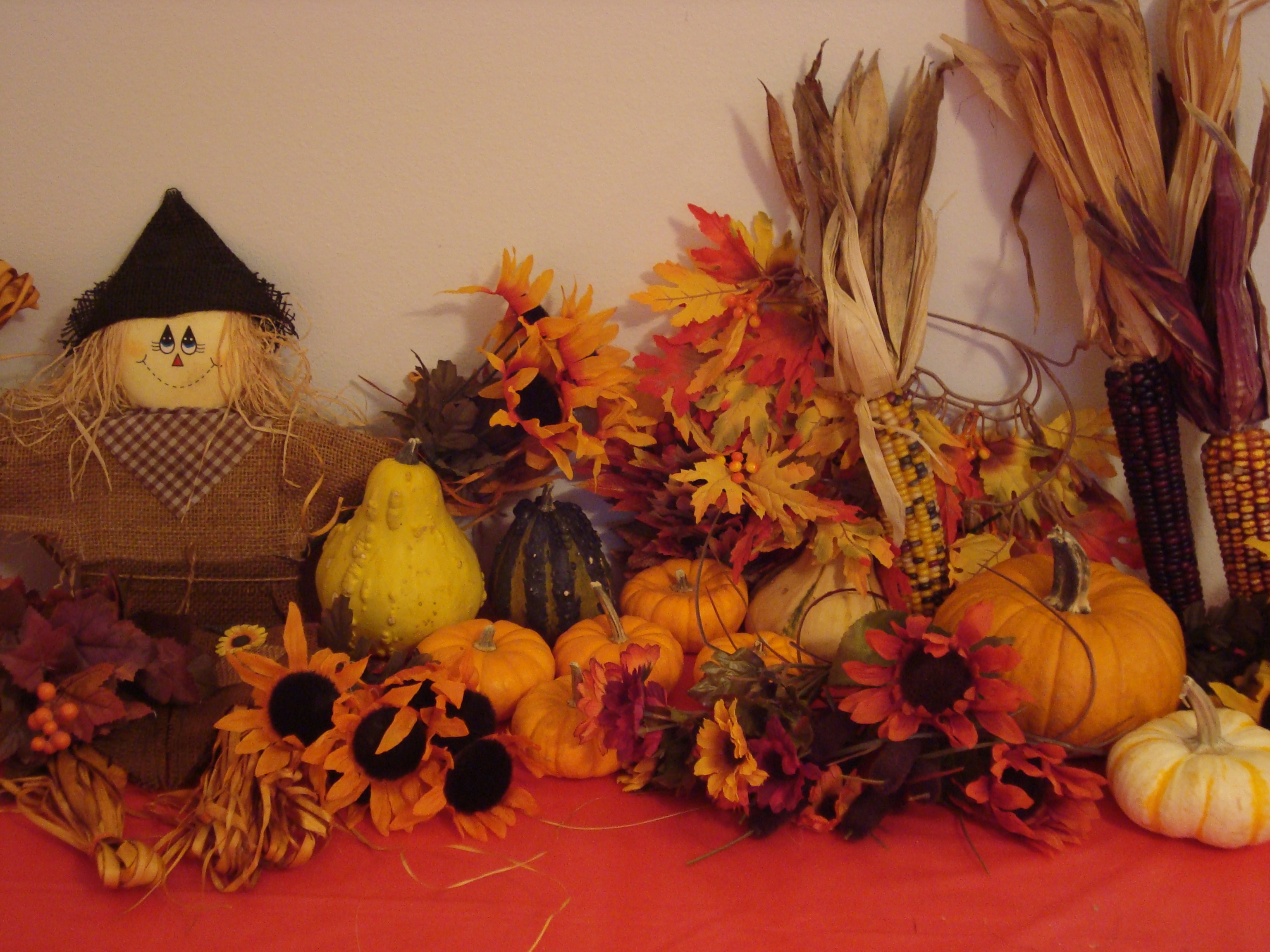
by Angela Hinkle | Oct 27, 2017
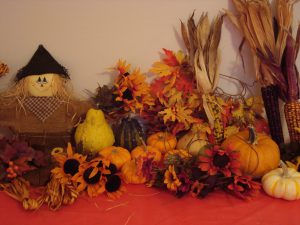
Favorite Fall Things
Photo Credit: Angela Hinkle
Fall is my favorite time of year. Let me share with you a few of my favorite Fall things to help explain why.
- Walking my dog in the heat of a summer morning is like trudging through a bowl of warm chowder. But with the cooler autumn mornings arriving, we become invigorated and feel like taking longer walks to add steps to the pedometer on my hip. Let’s hear it for more physical activity! For walking tips, check out cdc walking counts.
- Just think about all of those yummy, nutrient-dense foods available this time of year – peanuts, sweet potatoes, and squashes and gourds in a variety of shapes, colors, and sizes. See Florida Panhandle Produce in Season for seasonal produce in the Florida Panhandle.
- Okay, so leaves don’t really change color a whole lot when fall weather hits the panhandle of Florida. But I have this great tree outside my office window. My horticulture agent says it’s a Bald Cypress. This time of year, I get to see it change leaf colors from green, to golden yellow, to burnt orange. Simply beautiful. Look around your neighborhood to see what bounty of colors you can find.
- Though you will not find me wearing any shade of orange or deep yellow (those are definitely not in my color palette), I do cherish all the oranges, deep reds, purples, and yellows found in the flowers, pumpkins, scarecrows, and decorative corn stalks. Perk up your area with some fall color. Dollar stores have lots to pick and choose from.
- I’ve had my DNA tested. I am, in fact, 41% Sicilian. My holidays can therefore start with Columbus Day, work their way through the fun of Halloween, the respectful honors of Veteran’s Day, and through Thanksgiving with a myriad of Fall Harvest Celebrations sprinkled in between.
To get you in the Fall mood, try this simmering potpourri recipe. Let me know if you like it and be sure to share with family and friends some of your favorite fall things.
Favorite Fall Stovetop Potpourri
Add any or all of the following ingredients to a small pot: ground cinnamon, cinnamon sticks, orange peelings, ground ginger, whole cloves, ground cloves, vanilla extract, and almond extract. Add enough water to fill pot to rim. Then put the pot on the stove top at lowest setting. Add more water as necessary. Enjoy!








